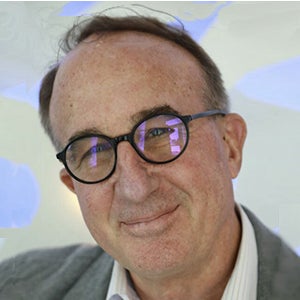By Robby Miller
This year the National Fragile X Foundation is celebrating its 40th anniversary! It’s hard to believe we have already spent 40 years serving the Fragile X community -families living with Fragile X, their loved ones, and professionals alike- and I think I speak for our entire team when I say we look forward to serving the community for the next 40 years (and more!). As a tribute to the organization’s rich history, we are cataloging our journey in monthly blog posts. We have so many people and institutions in our history it’s hard to capture them all, but we will certainly do our best. Join us as we walk down memory lane, memorializing how the National Fragile X Foundation got to where we are today so we can dream together of the brightest possible tomorrow.
– Hilary Rosselot
In previous posts about the 40-year history of the National Fragile X Foundation, we’ve described the early years where the mailing of hardcopy articles and scientific papers between medical and research professionals was the primary form of communication. (That’s snail mail we’re talking about, not email!) That was the case in the 1980’s and well into the 1990’s. In addition, those same professionals were, whenever possible, attending scientific conferences where they would share the growing body of knowledge about Fragile X.
Another form of early communication was the production and selling of cassette tapes with recorded audio from treatment and intervention specialists. (For our younger readers, a cassette was a mini, reel-to-reel tape encased in plastic that one listened to using a cassette player:>) Hardcopy books by Drs. Randi & Paul Hagerman, parent Jayne Dixon Weber and others were also available for purchase. In fact, veteran staff members recall walking to the local Post Office with arms full of packaged books to be sent off to families.
The NFXF launched a website in the mid-90’s and, although it was basic (like so many websites in the early years of the internet), it did include essential information about diagnosis and treatment. However, a problem was that many people had little to no online access. For those individuals, the NFXF would send them its entire website which had been downloaded to a CD! Today, the NFXF website comprises thousands of pages of content that is ever-growing and regularly updated and visited by families and professionals from all corners of the globe.
Another important form of communication was the Foundation Quarterly, a magazine-style periodical that “members” of the NFXF would receive four times a year beginning in the 1990’s and continuing to around 2015. Over the years, many parents shared how much they looked forward to receiving the latest issue since it always contained very practical guidance.
No article about how the NFXF has communicated with those impacted by Fragile X would be complete without mentioning its biennial international conferences, starting in the 1980’s and continuing this year with the nineteenth taking place this summer – but we’ll leave the history of our conferences for next month’s blog post!
As we hope readers can see, the NFXF has continually adapted to the times when it comes to the best ways to communicate with the Fragile X community. And who knows what the future might bring. Holographic webinars and conferences anyone?
This is the fourth in our year-long series on the history of the NFXF. Read them all!
- The National Fragile X Foundation — 1984: The Beginning
- The National Fragile X Foundation — The Early Years: 1984–1990s
- The 1990s and the NFXF Becoming a True National Organization
- How the NFXF has Informed the Community Through the Years ← you are here
- NFXF International Fragile X Conferences
- Improving Treatment Through Leadership of the FXCRC
- A 40 Year History of Supporting Research
- Legislative Advocacy
- A Global Fragile X Community
about

Robby Miller
Robby has spent over 50 years helping children with special needs, their families, and the professionals who work with them. Robby is particularly interested in how families learn about, access, and receive meaningful services from competent professionals, organizations, and institutions. This interest led to his co-founding the Fragile X Clinical & Research Consortium, also known as FXCRC. In his spare time, you’ll find Robby singing and playing rhythm guitar in a rock band with his pals.

